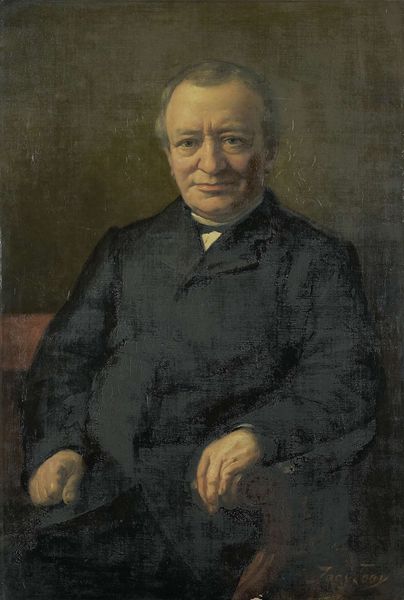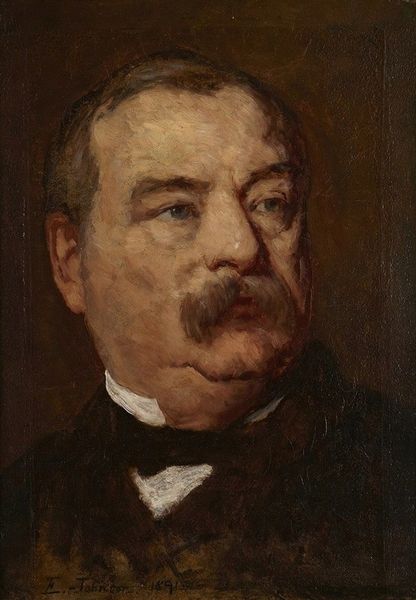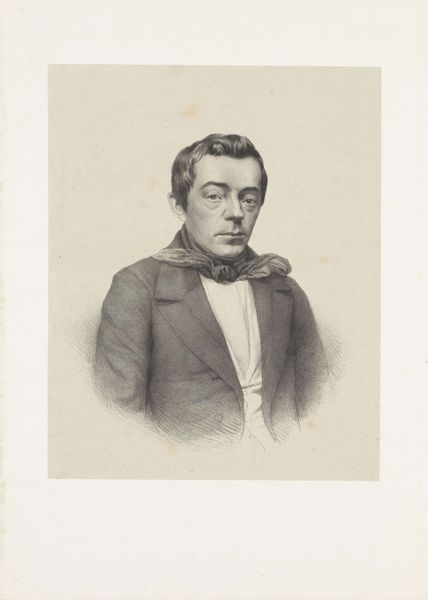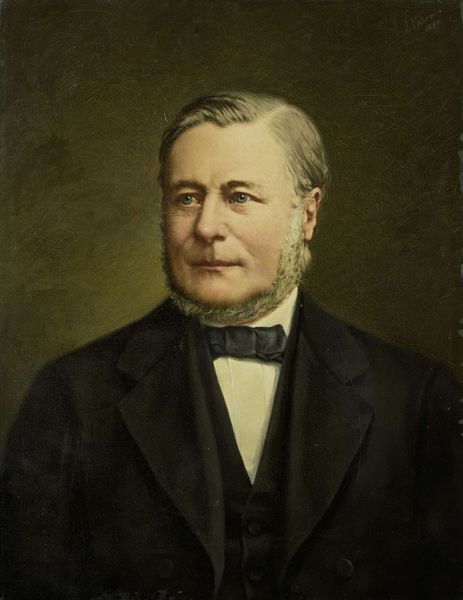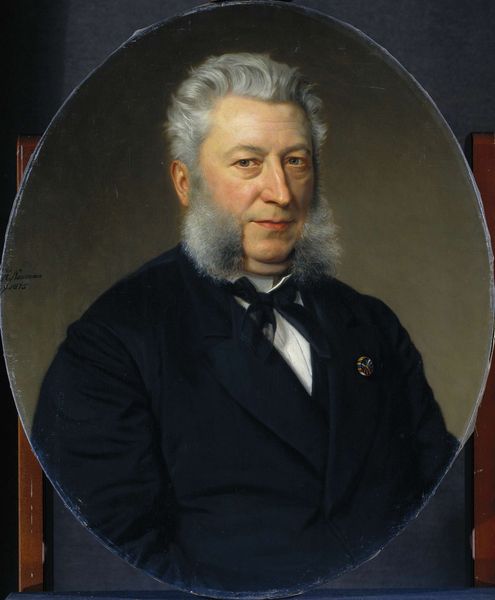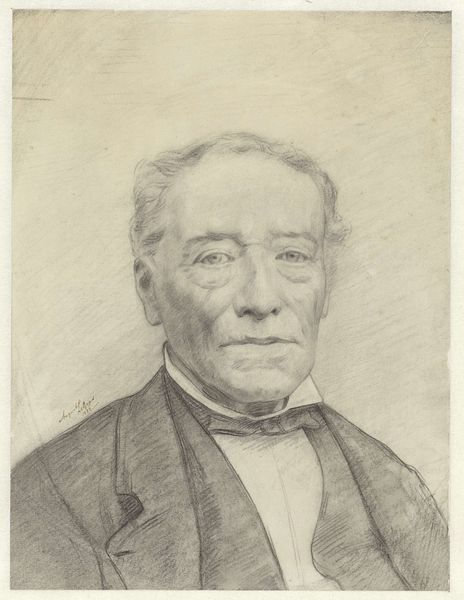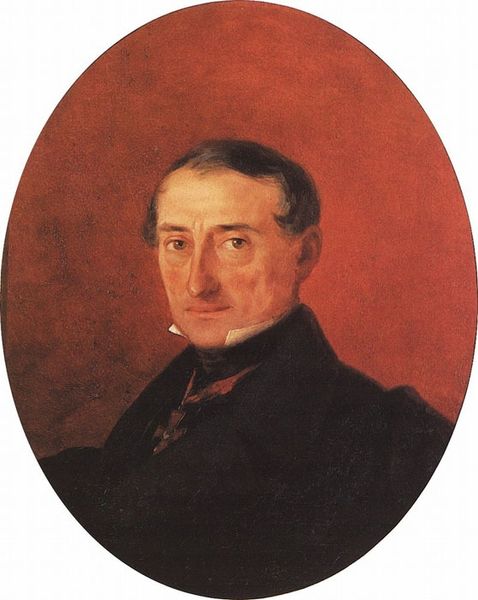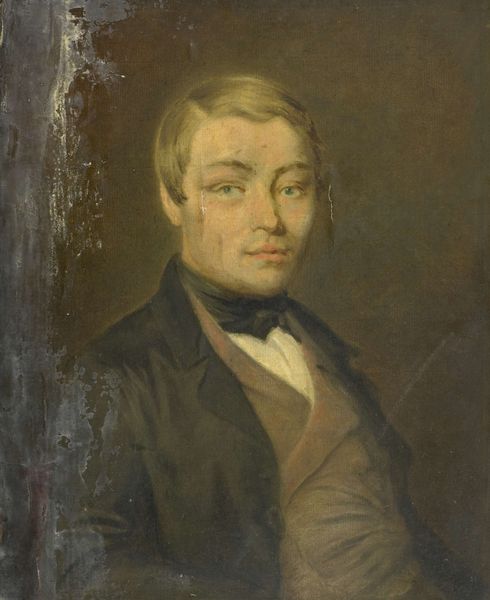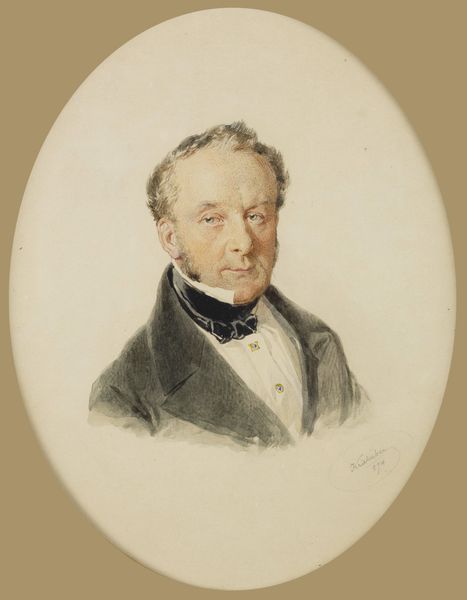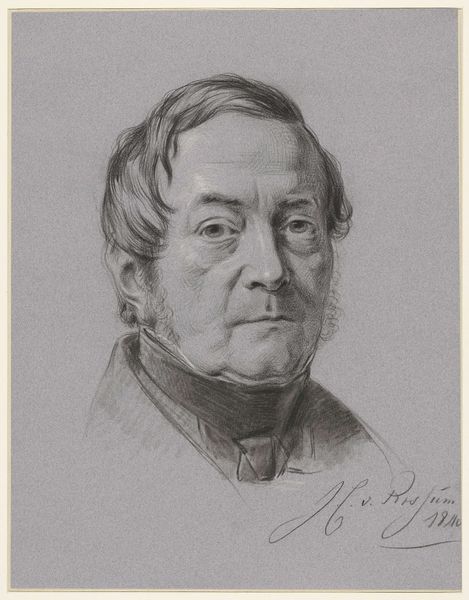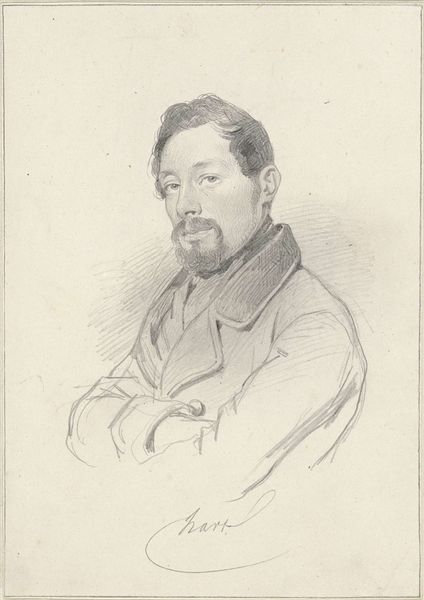
#
figurative
#
portrait reference
#
portrait head and shoulder
#
animal portrait
#
animal drawing portrait
#
portrait drawing
#
facial portrait
#
portrait art
#
fine art portrait
#
celebrity portrait
#
digital portrait
Copyright: Public Domain: Artvee
Editor: This is Gustave Courbet's "Portrait de Monsieur Corbinaud," painted in 1863. I’m struck by the almost stark contrast between the dark background and clothing, and the light illuminating the subject's face. What’s your take on the formal elements at play here? Curator: Well, immediately I observe the structure—the composition is incredibly simple, almost classical in its approach to portraiture. Notice how Courbet uses chiaroscuro, that contrast between light and dark, not to dramatize, but to bring a certain…volume to the face. How do you see that working formally? Editor: I think the tight focus on the face makes it about the subject’s presence, a statement in and of itself. There’s no need for extra frills when the surface details are already so captivating. The gaze itself, though, seems intentionally subdued, and there is something unsettling there. How might we address this, strictly from a formalist position? Curator: Indeed. If we attend solely to the formal aspects, we can say the painting has an undeniable monumentality achieved through restrained coloring and structured modeling, regardless of historical context. A sort of reduction to pure form—an effect both timeless and incredibly modern at the same time. And tell me, does the handling of light inform your own subjective response to this piece, outside purely structural concerns? Editor: I see how attending strictly to the formal qualities really forces one to hone in on what's presented to the eye, and not get carried away by history. It makes you respect what’s on the surface. Curator: Exactly. One cannot ignore structure if one wants to perceive the essence of the artwork!
Comments
No comments
Be the first to comment and join the conversation on the ultimate creative platform.
